Content marketers everywhere are searching for new ways to enhance their content/blogging strategy.
One of the latest and greatest tactics is to define and build out topic clusters— an idea that’s gaining a lot of attention within the writer’s community.
That’s because mapping out a clear content plan using the topic clusters can actually yield results! When HubSpot employees conducted topic cluster experiments they found that, “the more interlinking they did, the better the placement in search engine results pages (SERPs). Impressions (or views) also increased with the number of links they created.”
The content cluster strategy is helping bloggers to increase their rankings, and to build out more focused resources to support their most important products or services.
In this post, we’re going to share a thing or two about:
- How to build a topic cluster
- What topics to focus on when creating content clusters
- Finding blog post ideas to support your clusters
Let’s dive in:
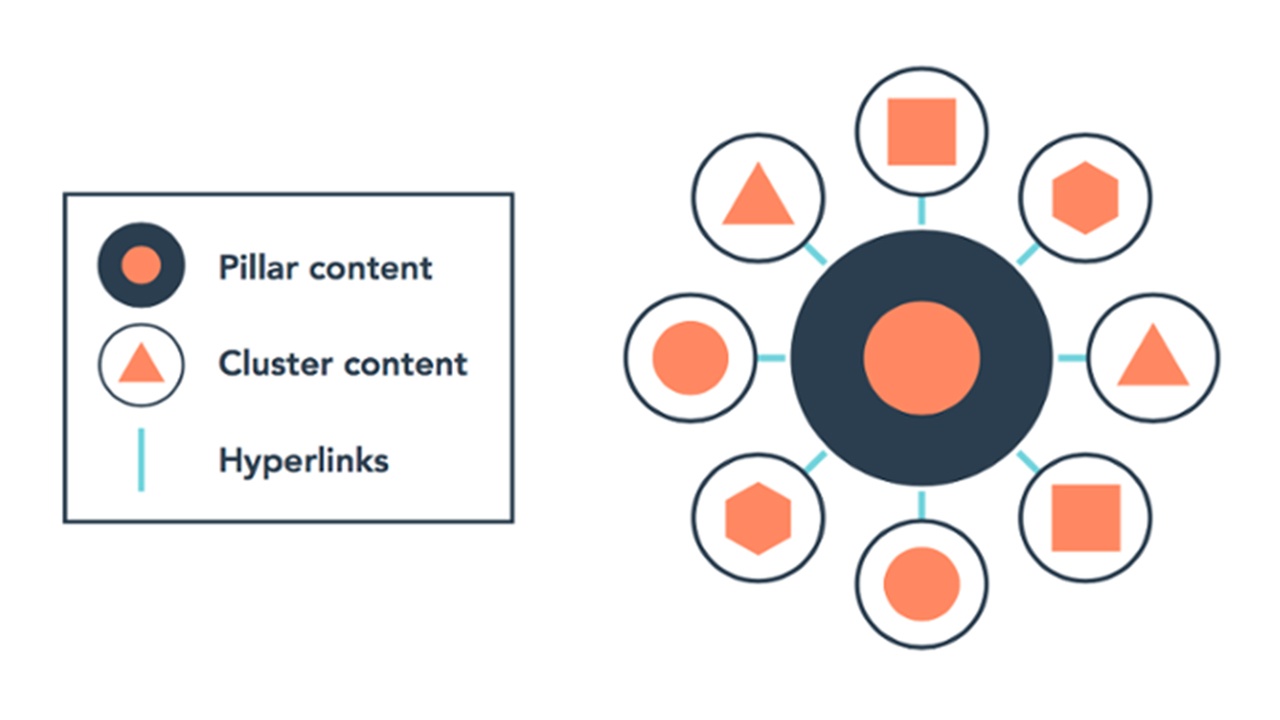
What Exactly is a Topic Cluster?
“Topic clusters, you say? I must be late to the party.”
It’s cool. Consider yourself officially invited!
If you aren’t sure what topic clusters are, here’s a great resource to get started:
The linked content was written by the same author as this blog, and is laser-focused on defining what these content strategies are and how they work. It delves a bit into HubSpot’s Content Strategy Tool, but we’ll get into that more deeply further down in this article as well!
What’s the Point of a Content Cluster?
If you click the link above (droppin’ hints pretty hard here), you’ll find evidence that building out pillar pages with supporting topic clusters has been shown to boost organic rankings.
By writing about related subtopics, search engines can detect semantic keywords that make up a wider-arching topic and say to themselves (that is, if search engines could talk):
“Hey, looky here. This domain is seriously, thoroughly addressing multiple facets of this topic. They must know a thing or two about said topic, and seem like an authoritative source to serve on my SERPs for related queries.”
The idea is that all these subtopics are themed around and connect back to a massive pillar page (AKA a page that’s 5,000 words or longer with super in-depth coverage of a topic).
By linking out to this core pillar within each new blog posted to support your topic cluster, you are spoon-feeding Google signal after signal (new blog after new blog and crosslink after crosslink) that you are a relevant, active source of all things related to said topic.
Google itself compared its search results to cool, refreshing fruit on a hot summer’s day, saying both “are best when they’re fresh.” Search engines want to see you are frequently, consistently talking about the topic you specialize in before seeing you as a relevant contender on the SERPs.
How to Pick the Right Blog Topics for Your Clusters
Choosing what to write about can be hard. Sometimes you’re just out of ideas; you feel like you’ve covered all the good topics already and are left scraping the bottom of the topic barrel.
If your blog is already jam-packed with content, we recommend performing a content audit to begin. This involves taking a long, hard look at all the previous posts you’ve written, and asking yourself a difficult question: ‘“Is anyone actually reading this??”
Step 1: Silo Your Existing Content by Subtopic
Sit down and think to yourself, “what’s all the shit I have on this subject already?”
Do a search of your blog domain. (Sometimes it’s easier to go to Google and type “site:https://www.insertyourblogdomainhere.com/blog my keyword” into the search bar to see what you already have written about certain subtopics).

Remember, your company might have been around for a while, you and may have a ton of content on that subject already.
In the example below, it’s easy to understand why you’d be overwhelmed! Afterall, by choosing too broad of a topic, i.e. the keyword “blogging,” I have 1,193 results to weed through. *cue heavy breathing*
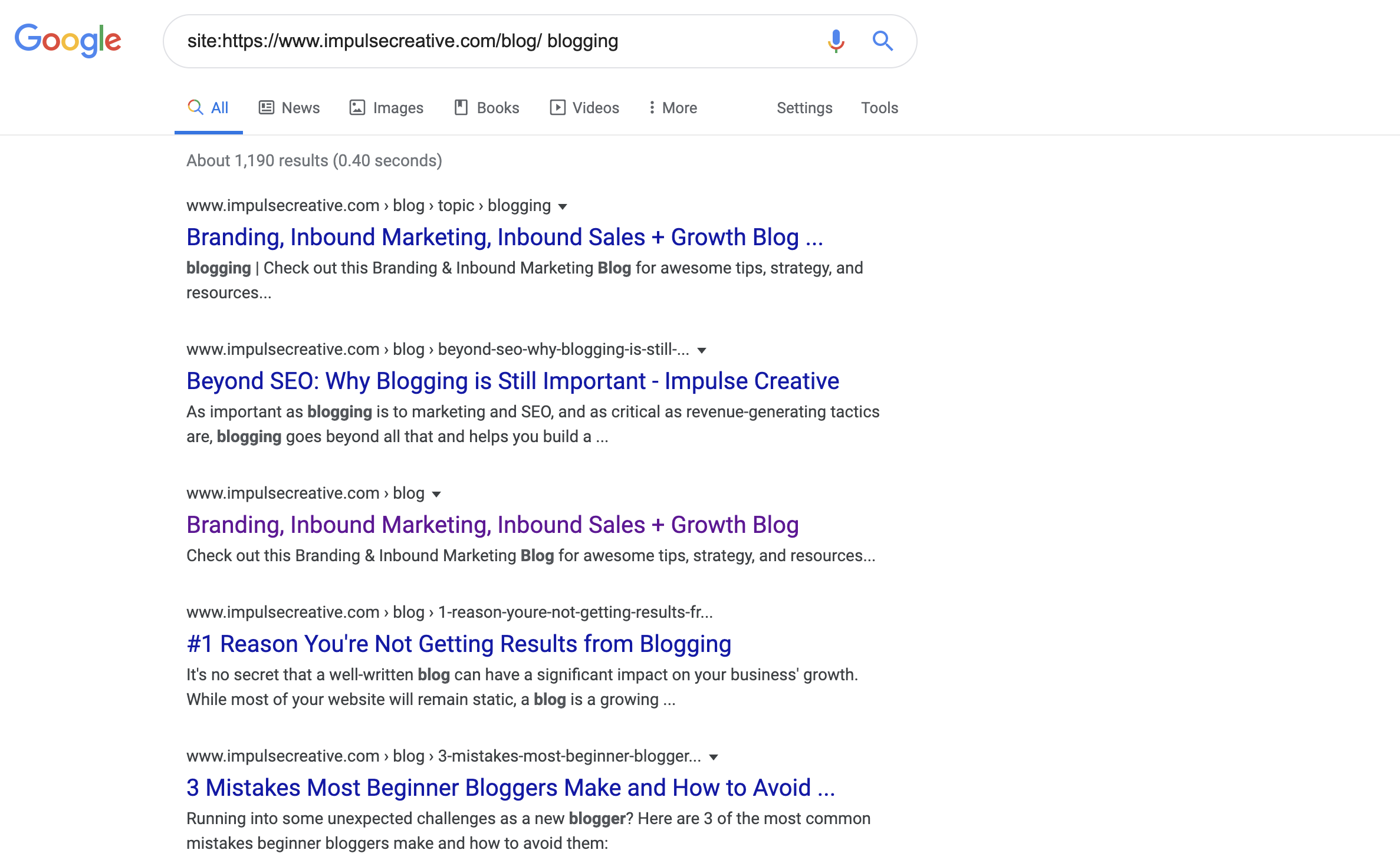
But after I get a little more specific by searching per subtopic, it’s a little less scary. Upon looking for any mention of the topic “topic clusters” on the Impulse Creative blog, for instance, we only see 28 results. Now we can dive into these subtopics and see if any of these posts are actually valuable.
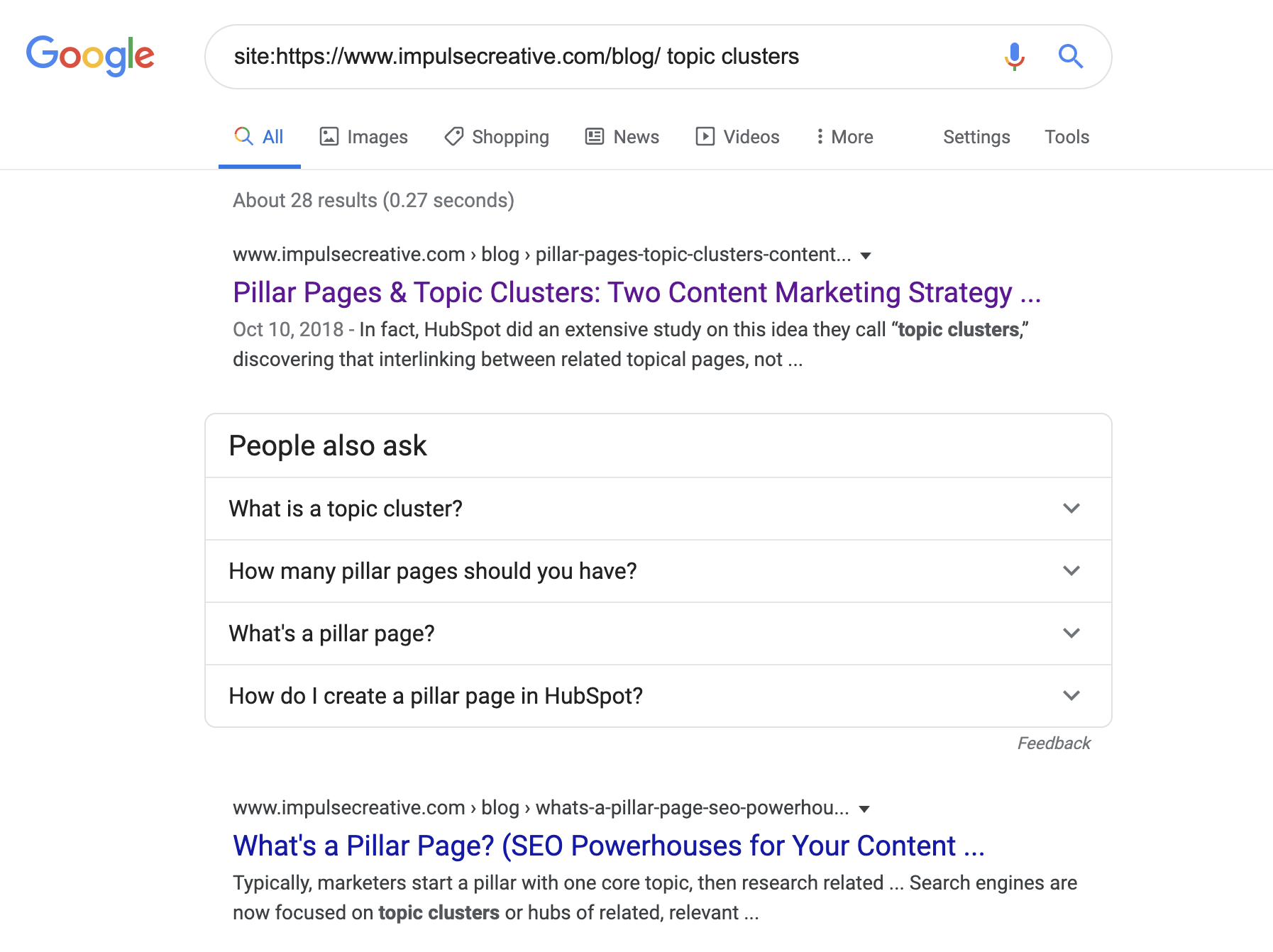
Step 2: Take a Subtopic & Validate its Relevance as a Topic Cluster
Start small. Head over to your website analytics tool and check if the first result has any organic traffic going to it.
In the graphic below, you can see that we took our first ranked article from our “site: search” and checked its traffic using HubSpot’s blog analytics tool.
Here it’s showing that our article, “Pillar Pages & Topic Clusters: Two Content Marketing Strategy ‘Must-Haves’,” is indeed getting organic traffic since it was published in July 2018 (look at the green humps on the chart).
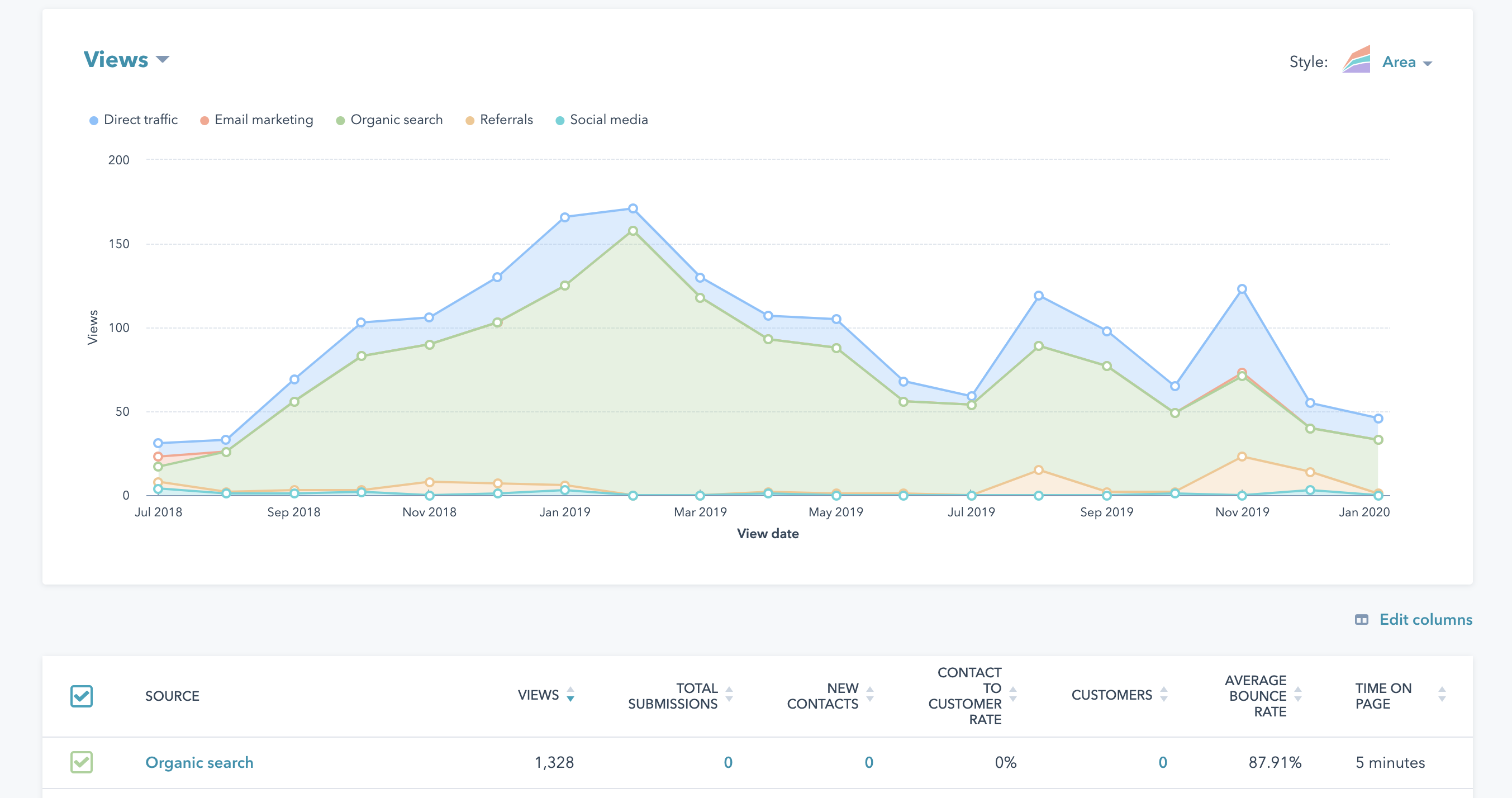
Cool. That means readers care about our topic of “topic clusters.” But let’s see what specifically they care about around it.
Take that same URL and stick it into an SEO tool to see its organic keyword rankings. We stuck our URL into SEMRush’s Organic Traffic search bar— and here we see that this piece of content is currently ranking for 19 organic keywords.
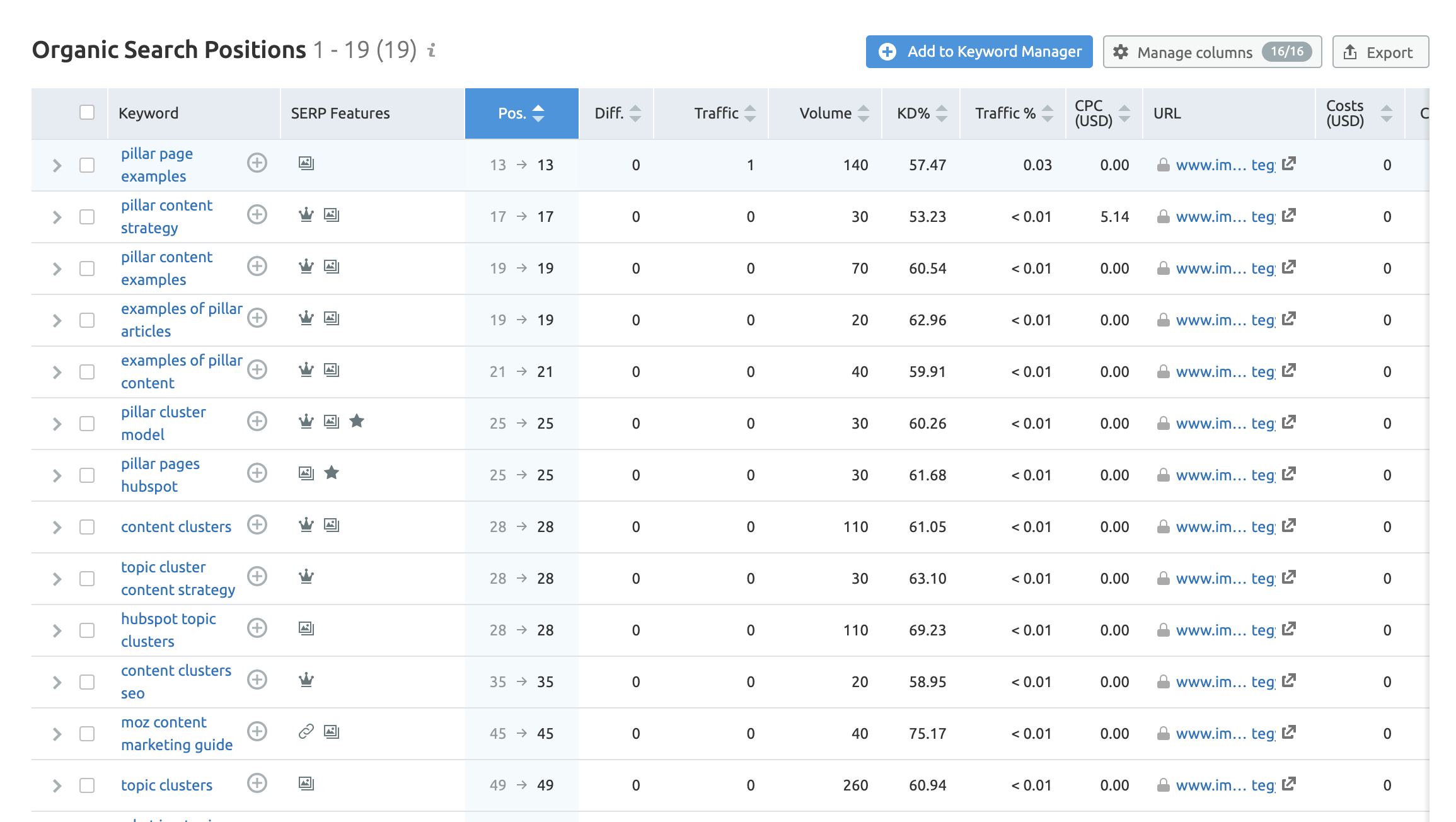
We use this keyword data as a guide to see what searchers care about around our larger topic, to ultimately get ideas for subtopics to write new content around.

Above we can see, for instance, that people are looking up “examples” of pillar content.

They’re also referring to topic clusters as “content clusters” (hello there, semantic keyword).

They deeply care about the “strategy” behind these content marketing practices.
Using this data, we may come up with a few fresh blog post ideas to support our “Topic Cluster” themed topic cluster:
- How to Make a Content Cluster
- Everything You Need to Know About Developing a Topic Cluster Strategy
- Etc.
In our example above, we the SEMRush keyword ranking data showed us that the same searchers looking up “topic clusters” as a topic also cared about the topic of “pillar pages.” Neat-o. “Pillar pages” might make a great topic cluster in-and-of-itself! Use this data to brainstorm a few pillar page related blog titles:
- 20 Kick-ass Examples of Pillar Pages
- What’s a Pillar Article & How to Write One
- Etc.
Conversely, while analyzing the first few results from your blog site search, you may discover that some articles just aren’t performing. Don’t write these guys off yet. We’ll loop back to reoptimizing content in a bit.
Step 3: Step Away from the Data & Doodle Up a Few Ol’ Fashioned Mind Maps
Okay, so after exploring some subtopics of a cluster, you have a great list of the current content you’ve covered on your site to springboard ideas for fresh blog topics. But to only use the existing posts you’ve covered for inspiration would be foolish.
Each cluster is like a tree: every main topic (the trunk) will have many off-shoots (branches). While each is still a part of the tree, they are all different.
If you’re aiming to build a topic cluster around “SEO,” compile some key terms that come to mind when thinking about search engine optimization. In this example, you may jot down the following after seeing similar themes ranking around your content or simply by thinking of related subtopics:
- Website optimization
- Image optimization
- Metadata and tags
- Keywords
- Organic traffic and ranking
- Website speed
- Search engines
- Etc.
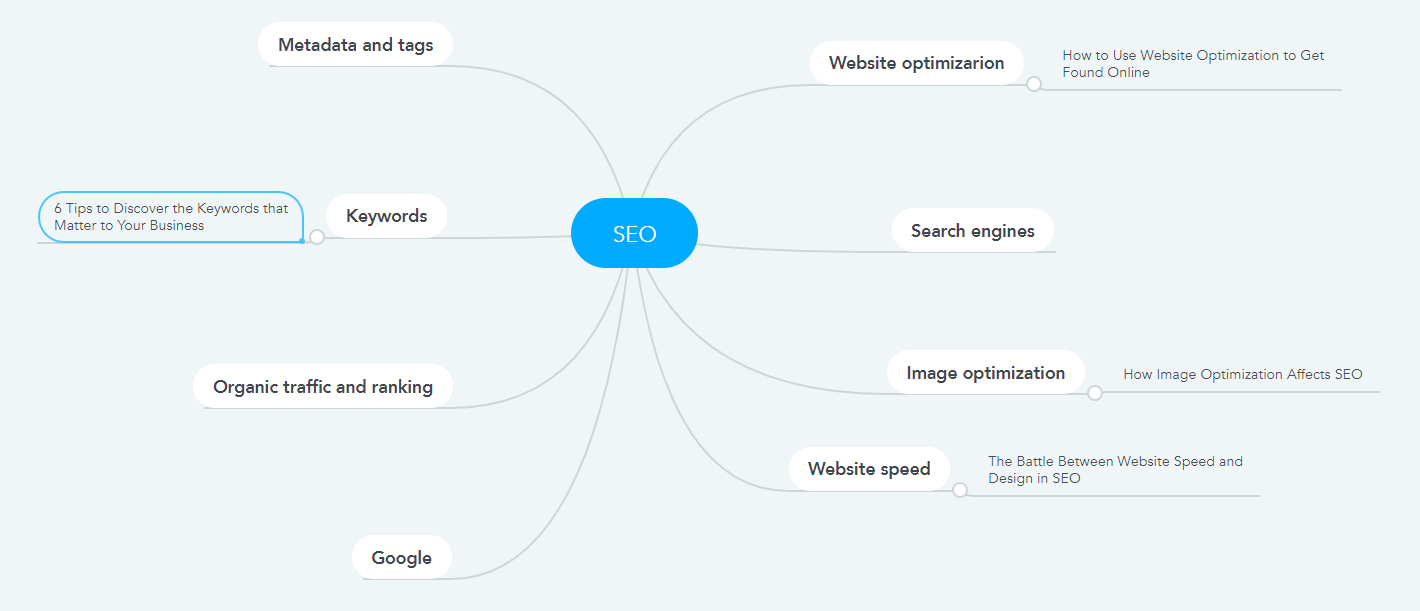
Or, if your topic cluster is around “content marketing,” perhaps you list the following subtopics:
- Writing
- Articles
- Posts
- Blogging
- Optimizing content
- Repurposing content
- Views and traffic
- Ranking
- Clicks
- Conversions
- Etc.
Right now, we’re just mind mapping— thinking of concepts and associated thought patterns that pop into your head when you hear the main topic.
Chances are, these semantic ideas will have some search volume around them, but before you dive into researching organic traffic, just trust your gut that a few of these general ideas are good “trees” to plant to grow new content.
Step 4: Look at Everything & Pick One Topic Cluster to Run With
Take a holistic look at everything you’ve compiled. You have some blog topic ideas that are data-driven— based on pieces that have performed well for you in the past— as well as generalized thought scopes around clusters closely related to your products or services.
This is a lot of information to digest. Instead of overwhelming yourself and creating 20 different content clusters, choose the one cluster you want to start with, and build this one out— exclusively.
How do you pick the first topic cluster to run with? Maybe this is a topic to support a product or service that you desperately need to push, or within an area that your competition is spanking you, and you need to step up your game. Whatever your logic, if it’s something you offer, you can’t go wrong. Just pick a topic and go!
How to Build a Topic Cluster
Remember our tree doodle? Pick a pillar topic for your trunk base and make a list of possible topic ideas.
Let’s just say in this example we’re running with our “topic cluster” pillar from our findings in Step 1. (It doesn’t need to be super pretty! No judgement on your drawing skills here).
Note some recurring patterns you’ve noticed in your research. In our example above, we noted a few things:
Recurring Patterns:
- Examples
- “Content” clusters (not just “topic” clusters”)
- Strategy
- HubSpot
- Pillar pages
Use those things searcher cared about to springboard rough blog topics next to each branch. After doodling out all the ideas you can think of, hunt for keywords to ensure your grand ideas have the potential to organically perform.
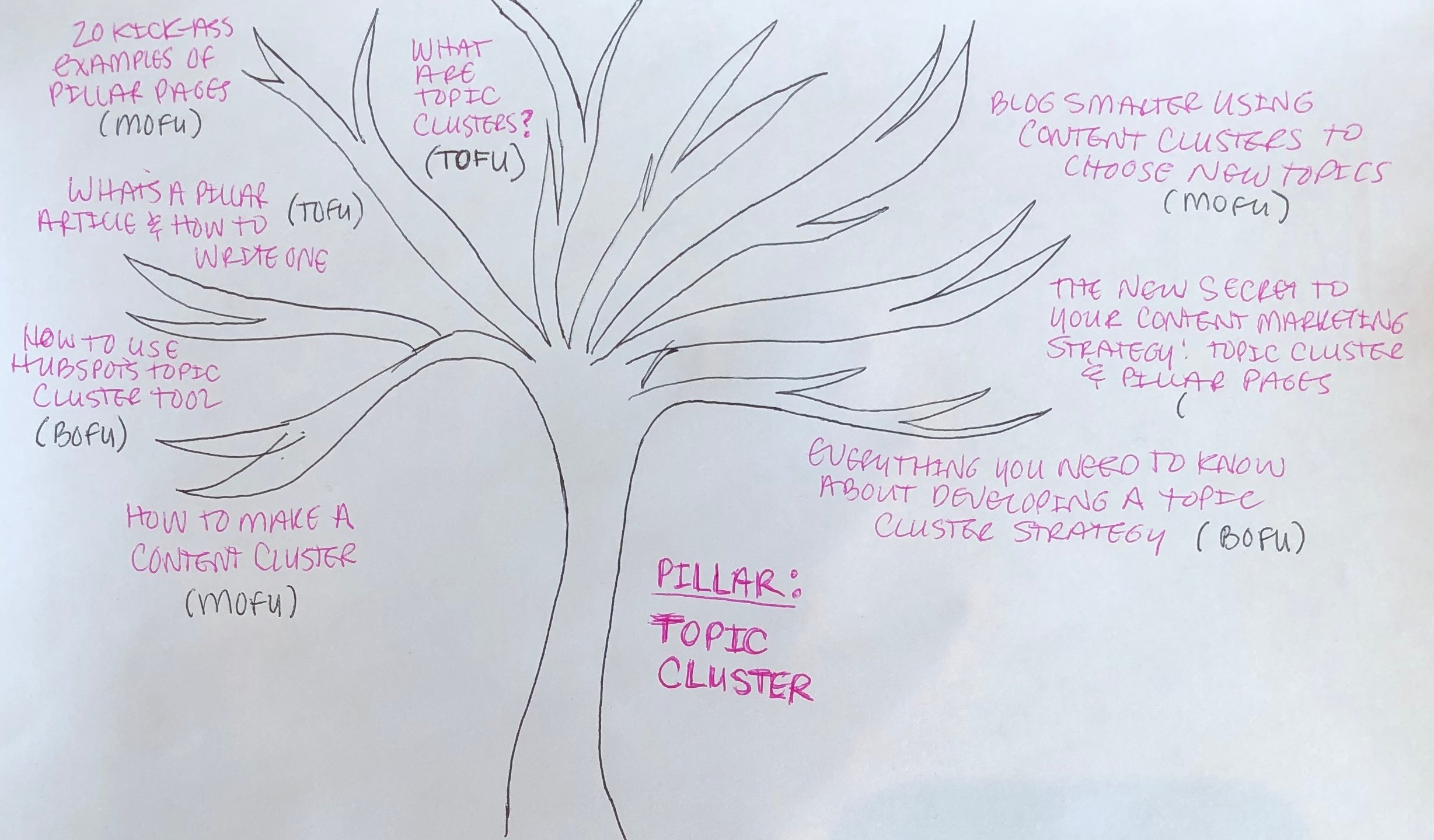
While doing this, be sure you are crafting topics for each level of the buyer’s journey, to target those in all three stages.
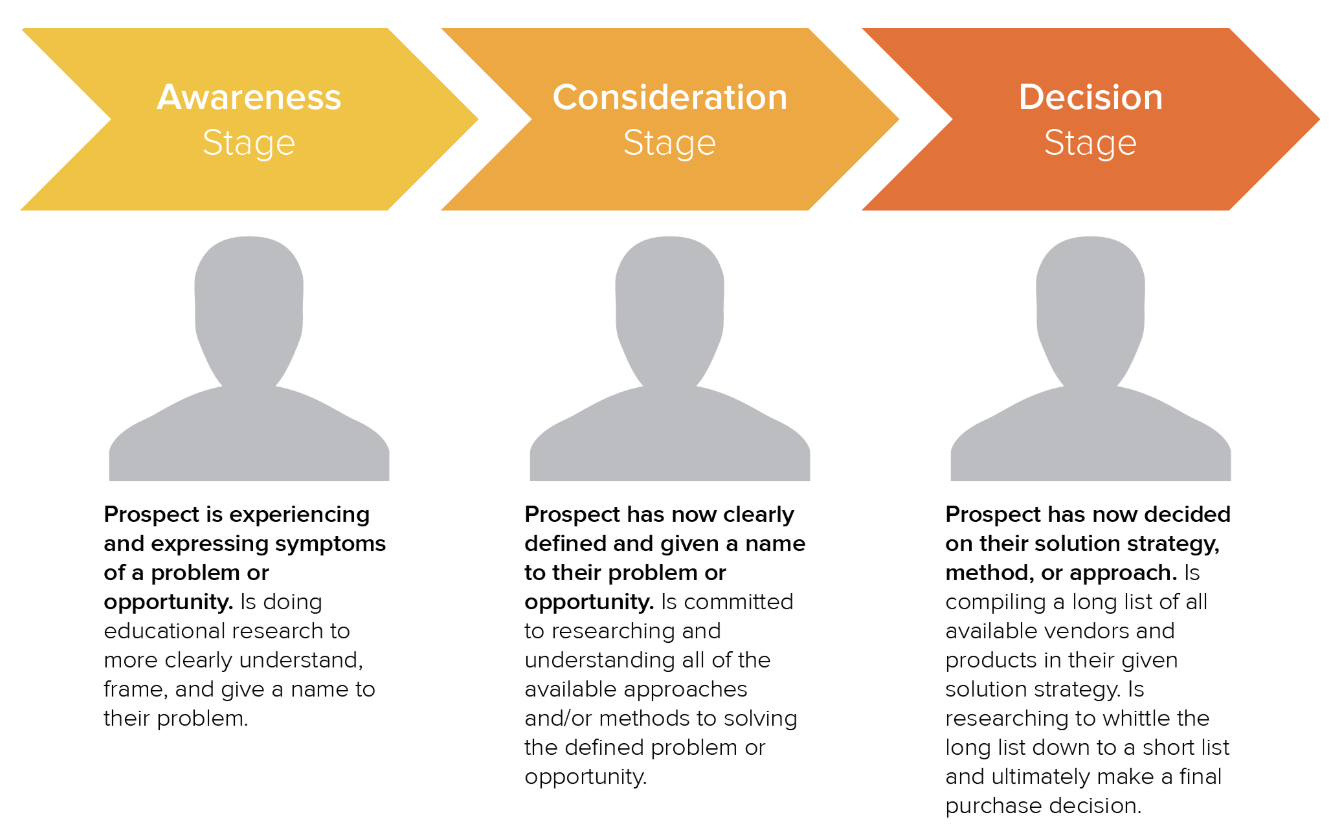
Jot down next to your blog topic ideas if someone searching for this type of content is within the top-of-the-funnel (TOFU), middle-of-the-funnel (MOFU) and bottom-of-the-funnel (BOFU)— or if they’re problem-solving, considering a solution or picking someone to help with a solution. Learn more about the marketing funnel here. Bonus points if you know the specific buyer persona you wish to target and note that too!
You can take these great ideas and stick them into a Content Plan spreadsheet, listing out topic topic ideas for your pillar:
- Potential blog title
- Main keyword and at least 3 semantic keywords you’re trying to rank for
- Stage of the buyer’s journey and funnel
- Target persona
- Desired publish date
Once you have this roadmap to work off of, start planning out your blogging cadence, assigning yourself consistent due dates for each post.
Remember, in every blog, link back to your main pillar page or supportive product/service page and crosslink other blogs with that same cluster. Interlinking here is the key to getting your content clusters to rank.
How to Maintain Your Topic Cluster
It can be hard to ensure you’re crosslinking to all your supplementary content or to keep track of all the blogs you have to support each topic cluster. That’s why HubSpot created a handy tool to manage your content marketing strategy: their Content Strategy Tool. (**This was recently rebranded as their SEO Tool, but those within the industry more commonly refer to it by its old name).
This blog’s author, Jenn, has a great tutorial on how to strategically maintain and continually build your topic clusters using HubSpot’s topic cluster tool:
Don’t Forget that Blogs Are Only One Part of a Holistic Content Marketing Strategy
Of course you need to be actively blogging to keep up with competitors, but blog posts are only one piece of content you can use to support a topic cluster.
For instance, you could link off to e-books, pages, videos, podcasts, webinars and so much more. Read our article for more ideas about repurposing already existing content you have at your fingertips.
Here is also some expert advice for how to reoptimize existing content to vamp up your cluster, without committing hours upon hours to developing fresh work from scratch.
Let Us Manage Your Content Strategy
Woo this article was a doozy, huh? Lots of great stuff, but lots of work to do it! If you want a strategic content marketing plan without the burden of having to manage or execute it yourself, let the content experts at Impulse Creative figure out what to blog for you.
We’re not like those other blogger outreach services. We truly get to know your brand and pair you with a long-term writer, one who is laser-focused on your objectives and can think strategically to help you reach your goals.
We’re HubSpot partners, and highly qualified to bring your blog more traffic and conversions. Explore our Blogging Services and contact us today.







